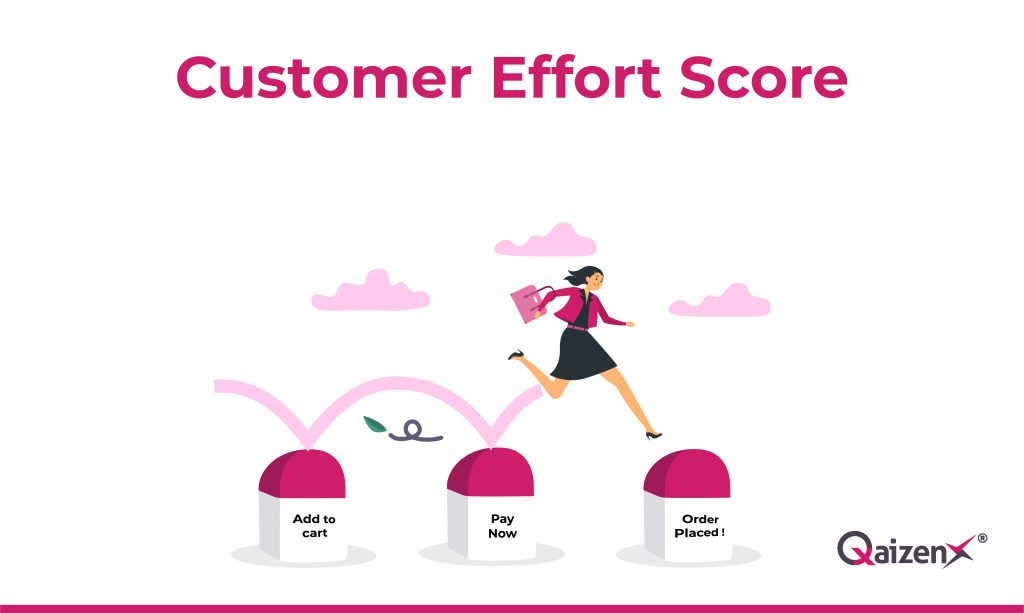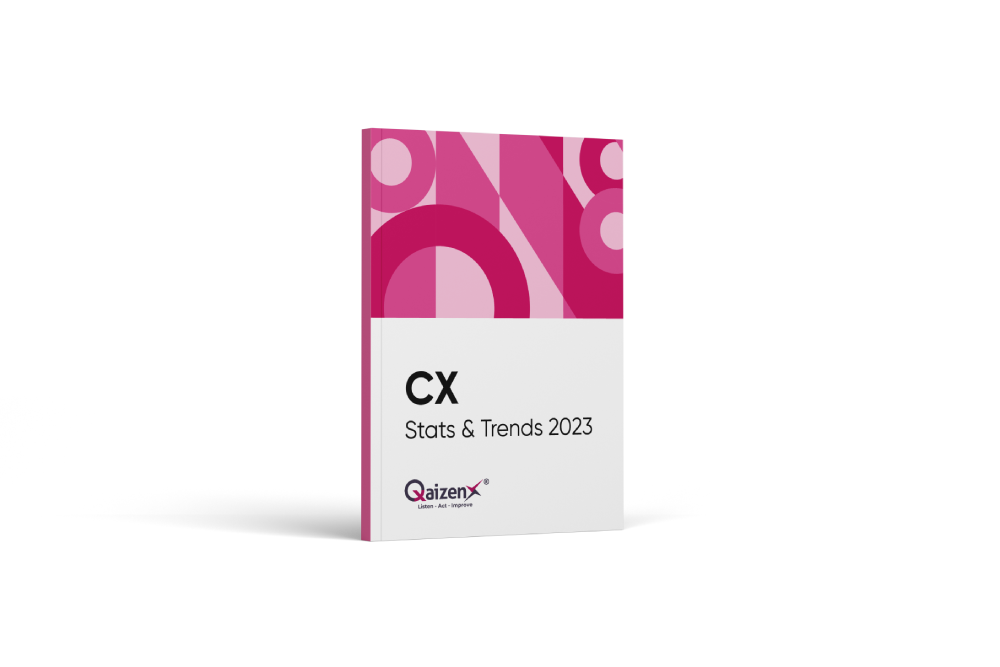Complete Guide on Customer Effort Score

We all have busy lives, and no one wants to spend their time managing companies, products, and services that require effort and hard work. In today’s competitive world, your customers can effortlessly switch to another company if doing business with you is too hard. This is why knowing your customer effort score (CES) is vital. It’s in everyone’s interest to ensure customers’ needs are met right away, and customer effort score surveys let you know when this isn’t happening so that you can take action.
What’s CES?
Customer Effort Score (CES) is a customer service metric that measures the perceived tiers of effort your customer have to put into a certain interaction with you to get their work executed or obtain their goal. The core idea to increase the CES is to track how much effort was required on the customer’s side to solve any difficulty and reduce it to enhance the loyalty rate.

How Do You Calculate a Customer Effort Score?
The CES is the common rating calculated from the total number of responses.
This indicates taking the sum of the response scores, and dividing it by way of the total number of responses:
CES Score = (Sum of Customer Effort Score) ÷ (Total Number of responses)
In general, most companies tend to have CES scores of 5 – 5.5. A customer effort score of 6 or higher is generally taken into consideration as above average.

Why is a high customer effort score vital?
A CES survey has greater benefits than just letting you know whether or not a customer was mainly happy or unhappy with an interaction. The customer effort score is a valuable metric in predicting growth, income, as well as customer retention, and churn.
1. CES surveys improve consumer loyalty and retention
Although a consumer has experienced an issue with your business, something as small as being requested about it can help them feel more taken care of, couple that with a customer noticing a problem they found was fixed, and you’ve got a good foundation of an amazing customer-business relationship. What’s more, HBR reports that 88% of customers who claim to have had an enormously easy experience plan on increasing their spending at a given company.
2. A good CES score can lessen customer service costs
- Use CES survey data to find sore points and struggles your customers are dealing with. A low level of effort required to make a purchase or clear up an issue means less stress on your customer support group.
- They’ll receive fewer inquiries to fix issues or provide data. This permits you to have a smaller team who can be compensated more on the same budget.
3. A high CES can help reduce customer churn
- That is especially important for SaaS businesses, which generally have a 5-7% churn rate.
- You want to apply the CES metric and data it offers to decrease that percent. An easy customer experience means loyal customers and lower customer churn.
- And loyal customers are going to be more of a profit than potential new ones, who may abandon their subscription soon after buying. For SaaS companies, loyalty is the ground for a successful business.
4. Customers who give high CES ratings are likely to repurchase
- The Gartner study showed that 94% of customers with effortless experience make another purchase at a given business.
- It’s easy to infer that the easier their customer experience, the much more likely a business will continue to profit off of a given customer.
5. Businesses with a low CES score can also lose out due to unfavourable review
Unhappy customers are likely to cost the company more than indifferent ones. They may spread bad reviews, stop future purchases, and discourage potential new customers.

CSAT vs NPS: What’s the difference?
The core difference between NPS, and the two customer experience metrics is they describe specific elements of the customer experience. CSAT measures customer satisfaction with reference to services or products, whereas NPS is best used to measure the overall relationship the customer has with an organisation. So, whereas the CSAT score commonly describes how your customer feels about the latest purchase, NPS can track their feelings about you as a brand, over the long run.
How does CES affect customer loyalty?
As defined in the book The Effortless Experience, your efforts on lowering CES and increasing loyalty work in two ways: encouraging dependable customers and discouraging dis-loyal customers.
Consequently, by combating your Customer Effort Score, you’re not only working on customer retention and satisfaction, but additionally on lowering the number of disloyal customers, reducing churn, and preventing potential reputation-damaging poor reviews from occurring.
One of the best ways to effectively measure customer loyalty (or lack of it) is to run CES surveys. They can appropriately capture task-specific efforts and—alongside your NPS surveys and CSAT surveys—are a good indicator of a customer’s overall brand experience. Check out more ways to increase customer loyalty.
When to send your CES survey
It’s not as when to send your product survey, as when to trigger it. It also does now not need to come back only once in a customer’s lifecycle. Discover what actions a customer takes together with your
business, and trigger a CES survey after they’re completed. Wondering when to use a CES survey? Some moments to consider are after:
- In-app “aha!” moment or job-to-be-executed of completion
- Customer service or customer success interaction
- A person signs up for your product
- A person completes a checkout process
- Someone completes an onboarding experience
- Someone chooses to cancel their subscription

Conclusion
Like most things, CES also has its limits. But because it requires the minimum attempt to implement and offers exact insights. It’s always better to be prepared and follow up on customers’ journeys than to stay
unaware. It ultimately is a high-powered metric; as a business, it might be your intention to enhance your customers’ experience in the most convenient way viable to make your customers’ lives easier.
Considering there’s no ultimate survey that gives you all the statistics you need, one ought to figure out what sort of information is prime and the best way to retrieve it. A comprehensive Customer Experience Management software like QaizenX is extremely effective in tracking your customer effort score.
Recent Posts
- 20 Examples Of Employee Feedback In The Workplace
- How to Obtain Valuable Input from Your Audience for Enhanced Product Development (and Increased Sales)
- 4 E’s of Employee Engagement and How To Implement Them
- How To Choose The Right Customer Experience Management Software For Your Business
- Why Customers Leave: Recognizing the Signs and Strategies for Retention



